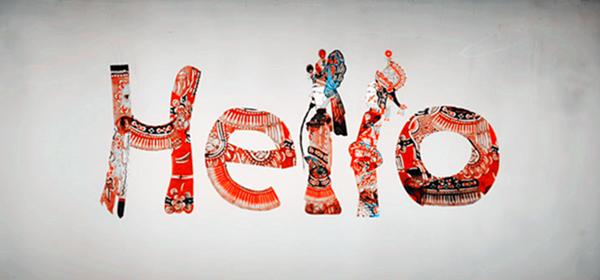Hello不够用?世界各国打招呼方式学起来
【来源:易教网 更新时间:2018-02-03】 
当对方是一个西班牙女孩、比利时的长者或是德国汉堡市的本土,你知道如何同他们打招呼吗?在不同文化间的寒暄相互冲击时什么会发生呢?与人交往时如若多了跨文化的种种复杂,我们便进入了礼仪“雷区”,危机重重。接下来我们一起简单浏览下我们应当注意到的几个文化准则吧!
 第一站:西班牙
第一站:西班牙
In Spain men and women greet others with two kisses, delivered from left to right, often taking hold of a shoulder while doing so. Shaking hands isn’t something the Spanish are keen on – “you might be contagious!”
在西班牙无论男士还是女士,他们均以两个吻互相问候(先亲吻左脸,而后亲右脸),且行亲吻礼时通常会扶住对方的肩膀。握手在西班牙却并不盛行——因为你可能带感染性病毒!
The weather and fútbol are considered small talk staples, but I found the most common intro when unexpectedly encountering an acquaintance in the street was, ¿a dónde vas? - where are you going? An achingly simple, slightly interrogatory opener that launches one into moderately more purposeful small talk.
天气与足球被认为是西班牙的典型的闲谈话题,不过我发现当人们在大街上与熟人不期而遇时,西班牙人最常用的介绍语却是¿a dónde vas?(你去哪呀?)这个异常简明又略带质询语气的开场白使人们展开目的性较之稍强的闲聊。
 第二站:意大利
第二站:意大利
“Ciao” reigns supreme in Italy. Regardless whether you meet someone during the day, night, or whether you’re saying hello or goodbye (one-word-fluency!). [/cn]
 第三站:保加利亚
第三站:保加利亚
[en]If you’re a creature of habit, stick to holidays in Bulgaria - they also kiss from left to right, although they have the odd custom of using different languages for simple exchanges; the Italian ciao to say goodbye and the French merci for thank you, for example.
如果你属于循规蹈矩之人,一定要去保加利亚度假,因为他们也从左至右行亲吻礼。不过他们有个奇怪的习俗——在简单的交流中使用不同语种,像是道别时说意大利语ciao,致谢时用法语merci。
 第四站:德国
第四站:德国
Greetings often depend on where exactly you are in Germany. In the north you’ll be greeted with amoin moin while in the south you may be on the receiving end of a servus. A hallo or a guten Tag will get you started everywhere, however.
在德国,人们之间的问候通常取决于你具体所处的方位。你若在德国北部,那么就会用amoin moin与人问候;如若你在德国南部,那就可能会听到servus这样的问候。然而无论你在德国哪儿,都能以hallo或guten Tag问候他人。
Young people often greet one another with a hug, but in large groups a simple nod of the head and a hallo zusammen (hello together)suffices. Interestingly, greetings remain stubbornly conventional within traditional companies with employees greeting one another formally with a firm shake of the hand and addressing one another by title and surname; guten Tag Herr Wowereit.
德国的年轻人经常拥抱对方聊表问候,但是在人数众多的场合中,简单地点头示意,并说上一句hallo zusammen(大家好)就足够了。有趣的是,传统德国公司员工间的问候方式仍沿袭传统,相当正式。他们会有力地握握手,并以职位和姓氏互相称呼,例如guten Tag Herr Wowereit。
 第五站:奥地利
第五站:奥地利
In Austria one greets with a servus, and they’re very attentive to titles (so pay attention, Doctor Doe). Women often say hello with two kisses, one on each cheek and always starting on the right and then moving to the left (they border Italy, after all). Men will normally shake hands.
奥地利人用servus互相打招呼,他们尤为注重职称,所以称呼Doctor Doe的时候注意他的职位。女士通常以两个吻问好,每个脸颊上各落一个吻,而且通常从右脸颊亲至左脸颊(毕竟奥地利毗邻意大利。)男士则通常握手问好。
 第六站:法国
第六站:法国
In France people greet with a bonjour or the more informal salut. And if you thought the formalities of kissing were somewhat novel, be prepared for the bise, planting up to four kisses on the cheeks of the French. The number is dependent upon region, so you’ll need to brush up on some local knowledge before mingling with the haute société. Pay strict attention to the formal vous form for older people and strangers.
法国人以bonjour ,或是更加随意的salut问好。如果你认为亲吻展现的正式有点新奇,那准备好于法国凛冽的北风中,在法国人的脸颊上印上4个吻吧。亲吻的个数由地区而定,因此在与法国上层社会的人打交道前,你得重拾一些对当地的了解。向长者和陌生人打招呼时,要特别注意使用正式的vous来称呼对方。
 第七站:巴西
第七站:巴西
Incidentally, Brazilians haven’t agreed on the number of kisses either, but numbers vary less dramatically between one and three. Further to the well-known tudo bem?, greetings include the joyously concise oi and e ai. Romanians, like their Bulgarian neighbors, sometimes add a touch of continental flair to their informal greetings with a salut! salut! or a servus for hello.
巧的是,巴西人间问候的亲吻数亦是不定的,不过变化的小些,从1个至3个不等。除去众所周知的 tudo bem?(你好吗?),巴西人打招呼的方式包括愉悦且简短的oi和e ai。同他们的邻居保加利亚人一样,罗马尼亚人有时会在他们非正式的问候中添上一些大陆的风格,像是salut!salut!或是servus。
 第八站:日本
第八站:日本
If all of the above greetings are too touchy-feely for you, you’ll find respite in Japan where the standard gesture is a reverential bow. No physical contact required. If a handshake does occur, make sure to still lower your gaze as a sign of respect to the other person. Small talk can be about anything, but make sure to save it until after work.
如果以上这些问候方式对你来说太亲昵,你会发现日本人标准的问候姿态是充满敬意的鞠躬。不需要任何肢体接触。如果确实要握手了,确保仍要压低目光,以示你对对方的尊重。闲谈可以围绕任何事情展开,可要保证等到下班后才能闲谈。
 第九站:瑞典
第九站:瑞典
In Sweden one greets with a hej or a longer heeeeej if you’re particularly pleased to see whoever has just entered audible territory. And then you speak about the weather and Eurovision.
瑞典的人们以hej问好,如果你特别乐意看见那人,那么会用更长的heeeej问好。随后你们讨论的话题是天气和欧洲电视。
And so it would seem that even faced with the normalizing powers of globalization, there is no such thing as a simple hello. The dissolution of distinct gradations of formality where certain behaviors are prudent is a common trend, but knowing each country’s etiquette is the first step to navigating this little gauntlet of intercultural communication.
这么看来,即使是面对全球化正常化的力量,也没有一个简单的打招呼方式。一些行为做起来要慎重,而此正式的明显差异渐渐消失是一个大趋势,不过知晓每个国家的礼仪是你应对跨文化交流这一小小挑战的第一步。
 搜索教员
搜索教员

